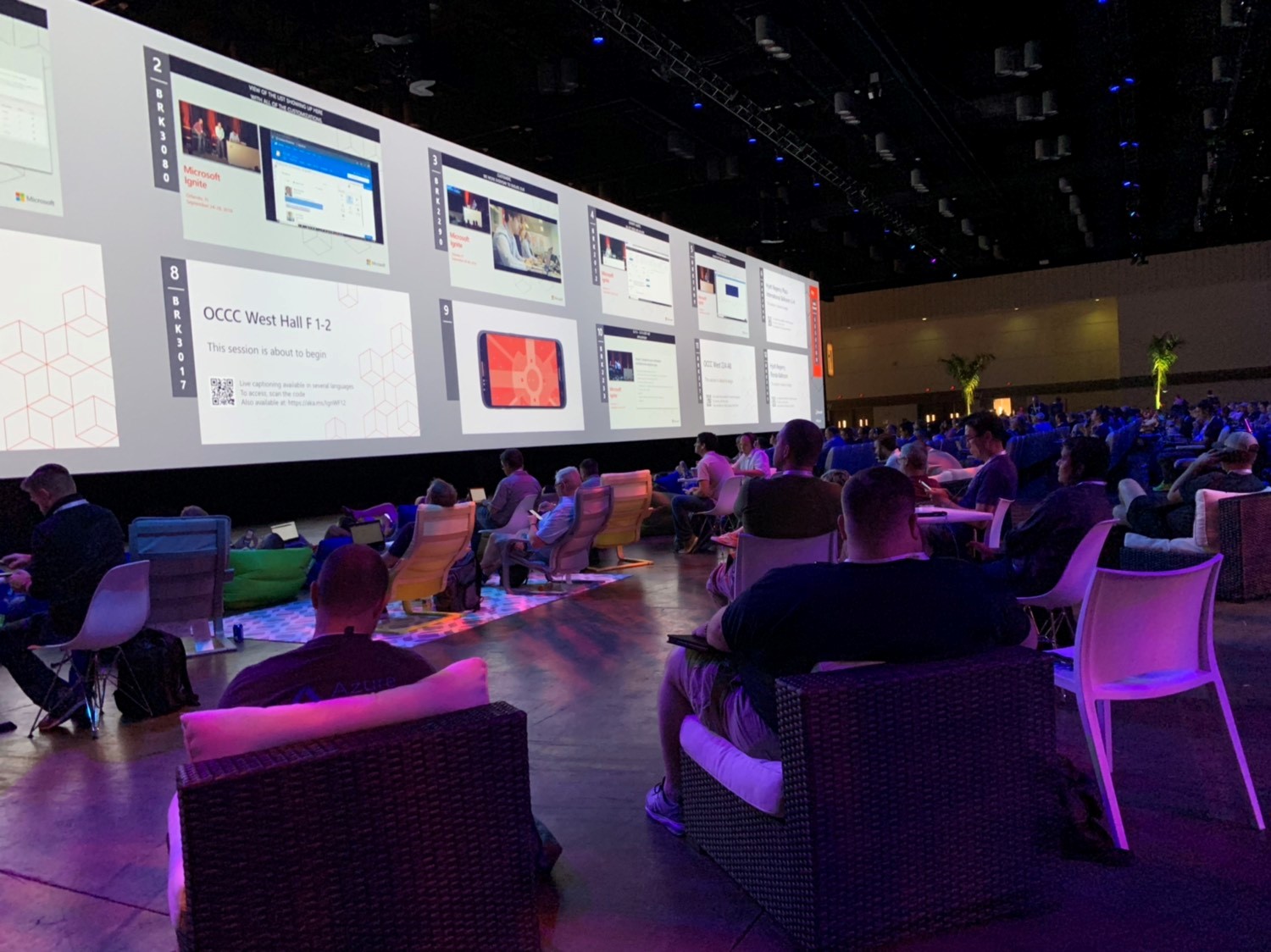Our field team returned from Microsoft Ignite with this digest of key takeaways.
Teams
Microsoft Teams is getting a lot of air time this year. When selecting sessions, we thought we saw more sessions on Teams than on anything else, even Exchange.
Teams is undergoing a fundamental shift. Microsoft is repositioning it as the default collaboration workspace. In its vision, it will take on at least some of the communication traditionally done via email. Teams has a great deal of potential to create functional, virtual spaces for groups of people (lowercase ‘t’ teams).
- Teams will have all the communication elements of Skype/Lync, including IM, Voice, and Meetings with enhancements.
- VOIP calling will also be available for all Teams users, including those on Office 365 E3—you no longer have to have E5 for voice.
- Written notes will live in webpages. You could have, for example, a matter-centric NetDocs repository linked to the client team and matter channel.
Microsoft is quietly admitting that the product was not quite ready for primetime when it was released last year. A lot of investment has been made in voice, in particular. As a result, Teams would now be able to suit the needs of most of our law firm clients. At this point, however, it doesn’t seem possible to gradually transition from email-based collaboration to Teams. As far as implementation goes, it seems to require an all-or-nothing approach.
The Teams transition signals a recognition that how we work is fundamentally changing. Hardware partners are catching up as they complete a new Teams certification platform. Standard players (Plantronics, Yealink, etc.) and existing Skype for Business-certified devices are still supported (for now, anyway).
Skype for Business 2019
In further collaboration news, Microsoft has announced Skype for Business 2019. Here are some notable highlights:
- There will be no in-place upgrade. From now on, you must build new and cut over.
- No Silverlight!
- Skype for Business will have hybrid cloud and Teams options. Teams is set to eventually replace Skype.
- Microsoft encourages that you consider Teams first and only stay on-premises if an unsupported workload requires it.
- Exchange Cloud Voicemail will replace Unified Messaging functionality with Exchange 2019 (since it no longer exists).
Exchange
Exchange 2019, expected to be released this fall, is the latest on-premises release of Exchange and targeted at large organizations that have specific on-premises requirements relative to security, data sovereignty, etc. As such, this release focuses on delivering advanced security, performance, and improved administration and management capabilities. Additionally, unlike in previous versions of on-premises Exchange, Microsoft has again separated the code paths of Exchange Online and Exchange Server so as to more efficiently develop and release new features for each platform.
Feature Overview
- Deployment on Windows Server 2019 Server Core recommended to provide the most secure server platform for Exchange
- Scalability increases from 24 cores and 192 GB RAM to 48 cores and 256 GB RAM
- Vastly improved search experience by introducing BigFunnel search indexing and leveraging Bing search capabilities
- Leverage SSD for acceleration of search, logon, message retrieval, and other select operations (SSD used in addition to low cost rotational disks)
- Unified Messaging functionality removed – move to Azure Cloud Voicemail or third party (or stay on Exchange 2016 for some time)
- Improved end user experience via new calendaring features (Do Not Forward, simplified calendar sharing, and administrator management capabilities for recurring meetings)
Requirements
- Windows Server 2019
- Active Directory forest and domain functional levels at Windows 2012 R2 or later
- Exchange 2013 or later – no Exchange 2010 anywhere in the environment
- Outlook 2013 or later
- Minimum recommended memory will be 128 GB but less is supported
- Licensing via Volume Licensing only
More to come as more information is released publicly.
Server 2019
Server 2019 will be generally available in October. It will feature:
- Built-in hybrid capabilities for Azure services, including backup, DR, and File Sync
- Enhancements to Windows Administrator Center
- Security Enhancements
- Windows Defender Advanced Threat Protection (ATP)
- Defender Exploit Guard
- Shielded VM’s for Linux
- Optimized for Hyper-Converged Infrastructure
For a deeper dive into any of the latest updates revealed at Ignite, contact us. We would be glad to set up a discussion.

